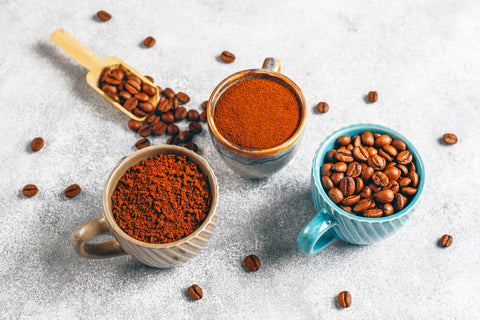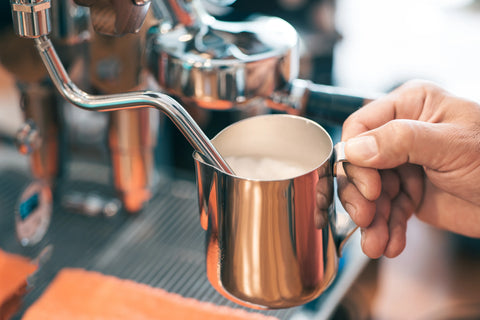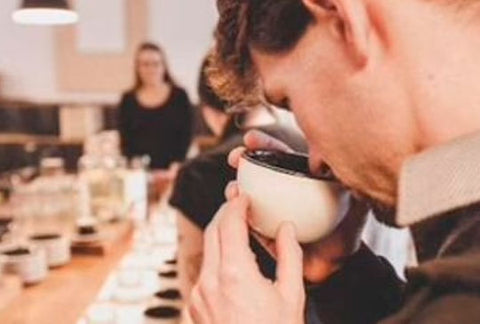
Over the course of its history, coffee has transformed into a craft beverage that has become indispensable, be it for inclusion in day-to-day tasks or for social events. More than a cup of coffee, it functions as an energy boost needed for a productive day at work, an excuse to get together with loved ones, or a great compliment to a tranquil afternoon with a book in hand. As its uses have expanded, so has its preparation.
Instead of going to a cafe and merely ordering a cup of coffee, you’re now inundated with a variety of different options and flavors. It opens the door to different types of coffees and preparation methods, as well as gives you a glimpse into other cultures around the world. By understanding the different terms for coffee, you can ultimately decide what is ideal for you and expand your own knowledge base.
Important Coffee Terminologies
A
Affogato: An Italian dessert that consists of a vanilla or alternative flavor ice cream topped with an espresso shot.
Americano: Espresso diluted with hot water. The beverage that is often preferred in the United States, which is how it got its name during World War II.
Arabica: One of the most popular varieties of coffee beans in the world. Many consumers prefer arabica over robusta coffee beans because they are high quality and offer a more balanced flavor.
B
Barista: A person who is specially trained in the art of making and serving coffee.
Blend: Coffee that is made up of coffee beans that originate from more than one place.
Body: The physical properties and sensations perceived by the mouth when the coffee settles on the tongue. This includes the heaviness, or mouthfeel, of the coffee.
C
Cappuccino: An espresso-based drink that's topped with steamed milk and froth. It has an equal ratio of all ingredients.
Cezve: A small metal pot, usually made of copper, with a long metal handle. Traditionally used for preparing Turkish coffee.
Cherry: The fruit of the coffee tree, commonly referred to as a coffee cherry.
Cold brew: Made by steeping coffee in water for various hours at cold or room temperature. This beverage is never exposed to heat, making it sweeter and less acidic than regular iced coffee.
Cortado: Shot of espresso mixed with equal amounts of steamed milk to reduce the acidity. Commonly consumed in Spain.
Crema: The thin layer of foam that sits on the top of a freshly brewed espresso. It's one of the prized components of a well-made espresso.
Cupping: A way for professionals to taste, evaluate, and compare the flavor, quality, and potential of a given coffee.
D
Dark roast: Coffee beans that are roasted to a dark brown or even a blackened color. Characterized by the drawn out oil that glosses the surface, resulting in a robust, bold, and full body.
Drip coffee: Coffee made by letting boiling water drip slowly through finely ground coffee.
E
Espresso: Strong, concentrated form of coffee made by forcing steam through ground coffee beans. Typically served in smaller servings than coffee.
F
Flat white: Coffee made with espresso and hot steamed milk. Doesn’t have the froth characteristic of a cappuccino.
French press: Coffee pot where coffee grounds are steeped in hot water and then pushed down by a plunger to separate the grounds from the brewed coffee.
G
Green coffee: Unroasted coffee beans.
H
Hand picking: Coffee farmers who pick coffee beans by hand. This helps them only harvest ripe coffee cherries, often resulting in better quality coffee.
L
Latte: Coffee made with espresso, steamed milk, and topped off with a small layer of foamed milk. The difference between a latte and a cappuccino is the ratio of ingredients.
Latte art: Pictures or patterns that are made by pouring steamed milk on the surface of a latte or similar coffee beverage. Common designs include flowers, leaves, and other creative designs.
Light roast: Roasted coffee that has a light brown color and typically no oil on the surface of the beans. Lighter in body because the bean has not been roasted enough to produce caramelized sugars.
M
Macchiato: Espresso coffee with a dash of frothy steamed milk.
Mocha: Commonly known as an espresso mixed with steamed milk and chocolate syrup. Less often used to refer to a high-quality type of coffee that originated in Yemen.
N
Natural or dry processing: Drying coffee cherries whole without the use of water or machines to remove any of the fruit. The long process often allows the fruity flavors of the cherry to be absorbed by the bean, giving the coffee natural fruity flavors and aromas.
Organic coffee: Coffee that is produced without the aid of artificial chemical substances, such as pesticides, herbicides, or additives.
R
Roasting: A heat process that turns coffee cherries into the brown, flavorful coffee beans that we consume. The heat helps bring out the natural aroma and flavor of the beans.
Robusta: Species of coffee beans that originate from Sub-Sahara Africa. Characterized by their bitter flavor because of their high caffeine content.
S
Single-origin coffee: Coffee that's grown within a single known geographic region.
Specialty coffee: High-quality coffee. The coffee must be specially handled throughout the entire production process.
T
Turkish coffee: Traditional style of coffee preparation found in Turkey and other countries. Very finely ground coffee is brewed by boiling, traditionally done in a cezve. The coffee beans are not filtered out.
W
Wet processing: The process of removing the skin and pulp from the coffee cherry by submerging them in water for softening and then de-pulping them.
Why These Coffee Terminologies Are Important to Us
At Pax and Beneficia, we’re continually working on improving our guests’ experience with coffee. By understanding the differences in common terminology that are used to describe coffee, you can better appreciate the process behind it. To test out your new vocabulary, come visit us at one of our locations for a specialized coffee experience.



